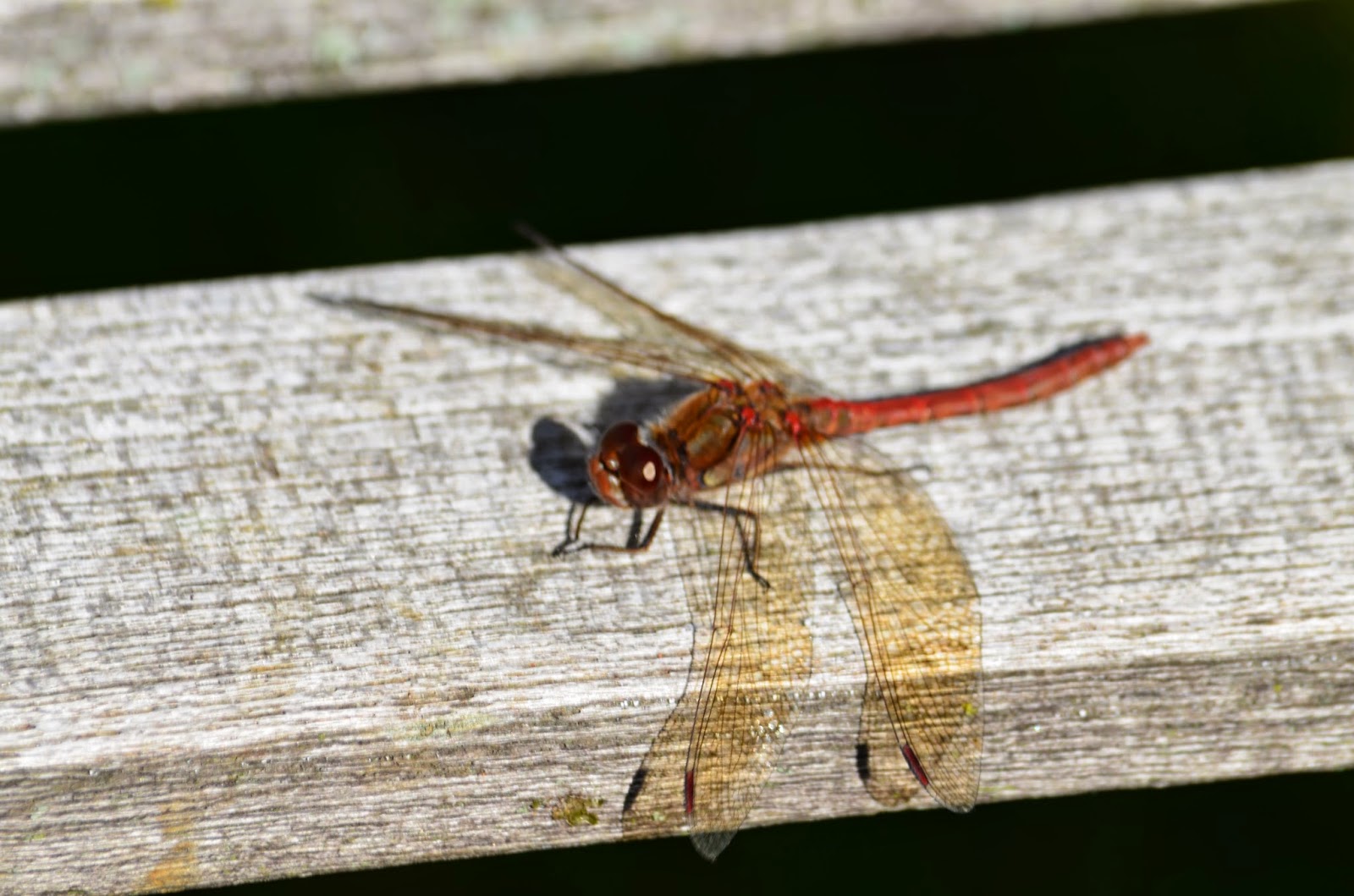 It's a funny month.
It's a funny month.September normally brings parched grassland, Harvest Festival and the first frost of Autumn, but this year the grass is still green, there are dragonflies and butterflies on the wing and the autumn colours of red, yellow and gold are only just starting to show. Yet this is the second week of October!
Today I made a patrol at Barford Road Pocket Park and I saw a confusing array of wildlife. Migrant Hawkers and Common Darters were flying around, goldfinches fed on teasel like it was August and the sun shone warmly on my back. At the same time, I spied a common gull and snipe from Scandinavia. Last week I saw a bittern there, probably a migrant.
Back at Paxton Pits we noticed a build up of widgeon in the Heronry Lakes. These ducks will mostly have nested in Iceland and they will have set off more or less as soon as the ducklings are big enough to make the journey. Why so many at Paxton Pits? The answer is that the big wetland at the Ouse Washes are too dry at the moment. I'm guessing we will soon get a lot of drake pochards too. Those diving ducks don't like waddling about like puddle ducks. However, once the Washes fill up, they attract a lot of birds away from us.
At home I spotted a few swallows on passage to South Africa and, a apart from my wilted tomato plants, the garden has not suffered from our first night of frost. All the same, it is getting colder and I'm having to provide a fire for my son's carers each evening.
 |
| Photo by Phil Smith. |
Jays flock into the UK in autumn to eat and to store up acorns. In years when the acorn harvest is low on the continent, we can see huge numbers of jays, but this year looks pretty average in terms of jays to me desperate there being lots of acorns here. It's the same with the berry-harvesting thrushes such as redwings and fieldfares; we get the biggest numbers when food is short in Europe and Scandinavia.
Most insect-eating birds such as warblers have left us already, but there should still be a Cetti's warbler or two around. I was still seeing a chiff-chaff in the wildlife garden daily last week. But tits, treecreepers, goldcrests and wrens eat insects and they stay the winter. Indeed, we even get an influx of these small birds from the continent each autumn.
It's a shame to say goodbye to the summer warmth, the insects and the flowers, but I'm looking forward to a big influx of migrants and a spectacular show of autumn colours before the end of the month.